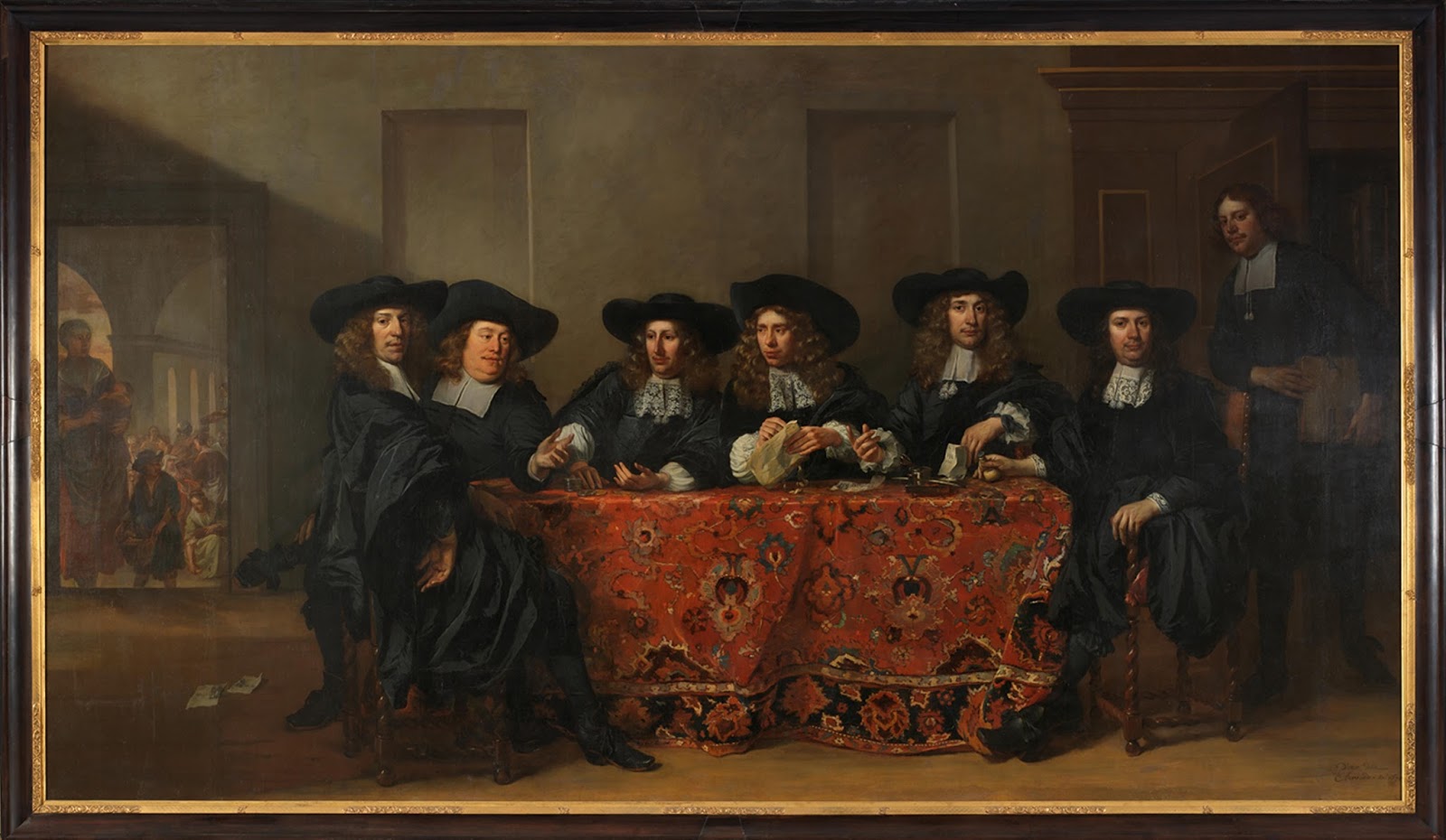Pieter van Anraedt: The regents of the Oudezijdshuiszitten- and almonershome in Amsterdam (1675)
(Amsterdam Museum, Amsterdam, The Netherlands)
A regents group portrait of Dutch painter Pieter van Anraedt (1635-1678). As usual on such work it shows a board-of-directors of an organization, this time the Oudezijdshuiszitten- and almonershome in Amsterdam. This organization was involved in the care of the poor (huiszitters or 'house sitters') who are not housed in a hospital or a hostel but still had their own home. Originally this type of care was handled by the church but after the Netherlands became Calvinist during the 80-year war (1568-1648), this care was taken over by the city council of Amsterdam. The city council founded two organizations for the "house sitters" - one for the Nieuwezijds (located at Prinsengracht 235-237) and one for the Oudezijds (located on the Leprozenburgwal now Waterloosquare, this building still exists). Poor who wished to qualify for assistance from both organizations (you had to be a resident of Amsterdam for at least three years) had themselves to register with the organizations. Any change in personal circumstances for the already registered poor (marriage, children, death, or migration) also had to be registered. The support the organisation profided was distribution of bread, butter, cheese and peat. Puerperals were further supported by 20 pence per week. Both organizations made a distinction in so-called winter dispensation (between xmas and Easter, the highest number) and summer dispensation. Connected almoners often also visited the poor at home to see if further assistance was necessary. Revenue for the two organizations came from the proceeds of houses, lands, interest letters and bonds. Furthermore collects from the Old Church, grants from the city treasury and public collection boxes in the city. The six regents themselves of the OudezijdsHousesitting-house were appointed by the mayors. They were divided into three committees (farmlands, brewery and bakery) and each regent was the president of the meeting for a period of 2 months. The regents were further assisted by an 'inside-father' (Dutch - 'binnenvader'). This man oversaw the dispensations, supervised other employees and reported on the daily affairs to the regents. Present in this painting are the six regents and the 'inside-father'. What is very special about this work is that the famous Dutch painter Ferdinand Bol is also depicted as one of the regents - his marriage to Anne of Erckel in 1669 made him a wealthy man so after that he didn't functioned as a painter anymore but as a client. From left to right:
- Ferdinand Bol (1616-1680) - artist.
- Aarnhout van der Cruijs
- Anthony Hoevenaer
- Jan van Beuningen
- Casparus Commelin
- Aarnout Schuyt
- Symon Leeman (standing), he is the 'binnenvader'
painting from 1675.
